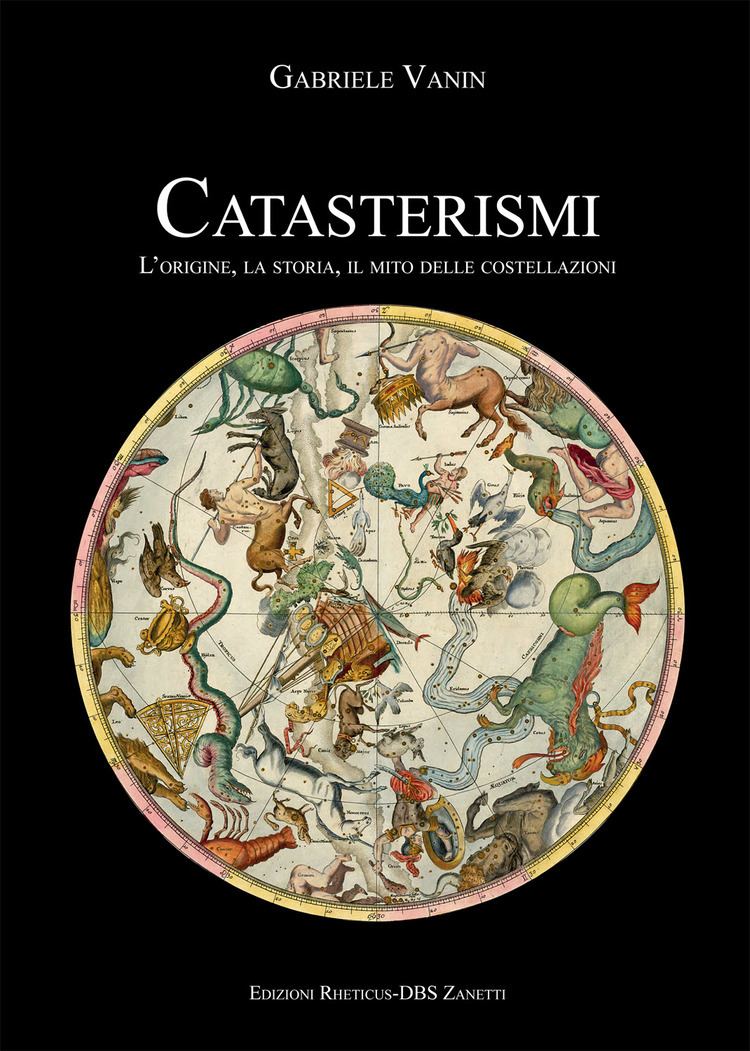Copyright date 1992 | ||
 | ||
Similar Eratosthenes books, Astrology books, Other books | ||
Catasterismi (Greek Καταστερισμοί Katasterismoi, "placings among the stars") is an Alexandrian prose retelling of the mythic origins of stars and constellations, as they were interpreted in Hellenistic culture. The work survives in an epitome assembled at the end of the 1st century CE, based on a lost original with some possible relation to the work of Eratosthenes of Cyrene; thus the author is alluded to as Pseudo-Eratosthenes. The pseudepigraphic attribution to Eratosthenes presumably was meant to bolster the work's credibility, but while the Catasterismi describes constellations, it is more concerned with the mythological narrative attached to each than with the mathematical tradition of astronomy. Although there is no absolute distinction between astronomy and astrology in antiquity, intellectual circles in Alexandria during the 1st BCE began to distinguish between astrology for making predictions and astronomical observation for scientific conjecture.
Catasterismi records the mature and definitive development of a long process: the Hellenes' assimilation of a Mesopotamian zodiac, transmitted through Persian interpreters and translated and harmonized with the known terms of Greek mythology. A fundamental effort in this translation was the application of Greek mythic nomenclature to designate individual stars, both asterisms like the Pleiades and Hyades, and the constellations. In Classical Greece, the "wandering stars" and the gods who directed them were separate entities, as for Plato; in Hellenistic culture, the association became an inseparable identification, so that Apollo, no longer the regent of the Sun, actually was Helios (Seznec 1981, pp 37–40).
Chapters 1–42 of Catasterismi treat forty-three of the forty-eight constellations known to Ptolemy (2nd century CE); chapters 43–44 treat the five planets and the Milky Way.
The work cites in some places the lost Astronomia attributed to Hesiod. Many of the mythic themes in Catasterismi are simply drawn from Aratus, Phaenomena (ca 275 BCE) and the sequential arrangement is essentially that of Aratus as well. On the other hand, a similar later account is the Poeticon Astronomicon, or De astronomia (tellingly also titled De astrologia in some manuscripts that follow Hyginus' usage in his text) attributed to Gaius Julius Hyginus.
During the Renaissance, printing of Catasterismi, invariably attributed to Eratosthenes, began early, but the work was always overshadowed by Hyginus, the only other ancient repertory of catasterisms. Catasterismi was illustrated by woodcuts in the first illustrated edition by Erhard Ratdolt, (Venice 1482). Johann Schaubach's edition of Catasterismi (Meiningen 1791) was also illustrated with celestial maps drawn from another work, Johann Buhle's Aratus (Leipzig, 2 volumes, 1793–1801).
After the old Teubner edition of A. Olivieri, Pseudo-Eratosthenis Catasterismi (Leipzig 1897), the text has a new complete edition including the recensio Fragmenta Vaticana: Eratòstenes de Cirene, Catasterismes, Introducció, edició crítica, traducció i notes de J. PÀMIAS I MASSANA, Barcelona 2004 and ERATOSTHENES, Catasterismi, Text, Übers., Komm. von J. PÀMIAS u. K. GEUS, Oberhaid 2007.
